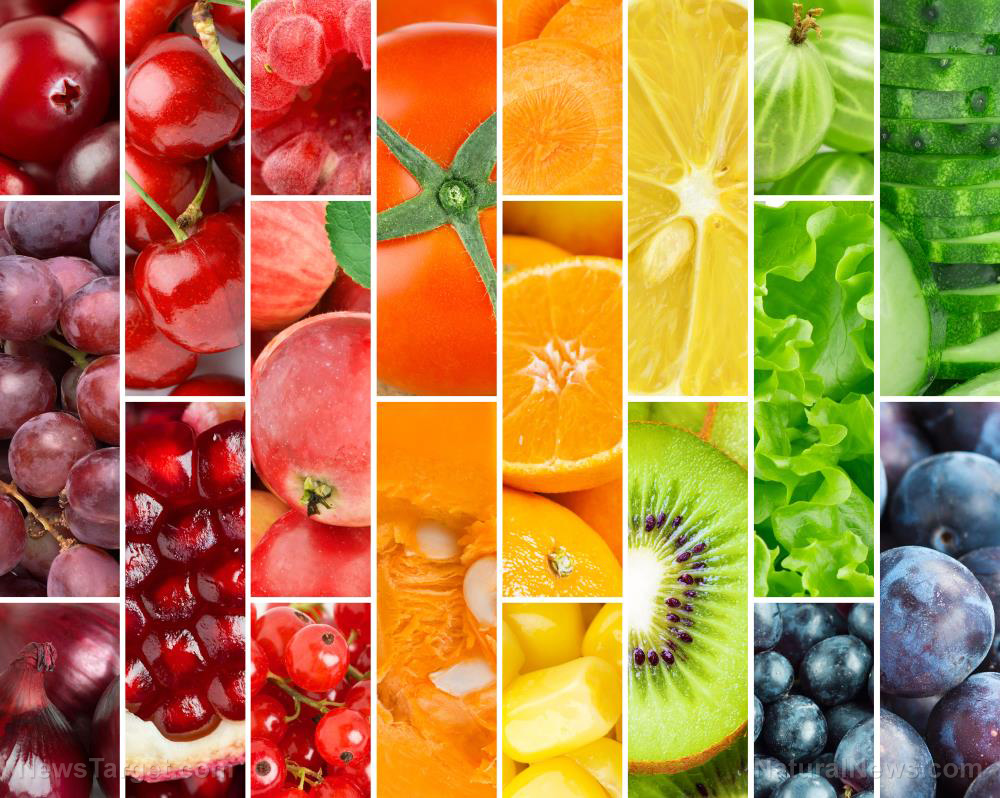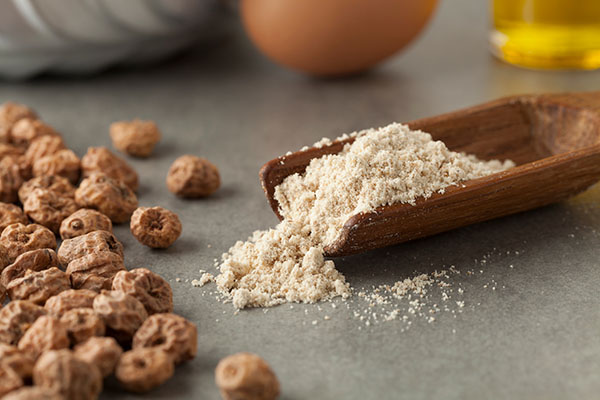
Advertisement
Eating fruits and vegetables is an important part of a balanced diet. Following a “rainbow diet” ensures that you get the vitamins and nutrients you need to boost your overall health.
The importance of a rainbow diet
Unlike processed foods, fruits and vegetables usually contain little to no fat, cholesterol, or sodium. Fresh fruits and veggies also contain complex carbohydrates, fiber and nutrients.
Most superfoods are low-calorie and they contain natural sugar. Junk food like sweets and cakes contain refined sugar, an ingredient that may cause abrupt fluctuations in your blood sugar level.
Fruits and vegetables of different colors have varying nutrient profiles. Getting a daily serving of different colorful superfoods helps you maximize the nutritional benefits of each fruit and vegetable.
Blue and purple superfoods and ellagic acid
Blue and purple fruits and vegetables are full of beneficial anthocyanins. These natural plant pigments have potent antioxidant properties that can help lower cardiovascular disease risk.
The American Institute for Cancer Research reports that blue and purple superfoods also contain flavonoids and ellagic acid, two compounds that can help eliminate cancer cells.
Studies show that anthocyanins and ellagic acid in blueberries can help fight cancer cells in the breasts, lungs, pancreas and stomach. Anthocyanins and ellagic acid also have anti-inflammatory properties that can help prevent cancers of the esophagus and colon.
What to eat:
- Currants
- Blueberries
- Eggplant
- Grapes
- Plums
- Purple cabbage
- Purple carrots
- Purple potatoes
- Radicchio

Green superfoods and eye health
Green vegetables help keep your eyes, bones and teeth healthy. Green superfoods are rich in vitamin K, which you need to help your blood clot properly.
A two-cup serving of raw spinach provides 290 of the 90 to 120 micrograms of vitamin K that you need daily. The antioxidant vitamins of green veggies, especially vitamins C and E, can help lower your risk of chronic diseases.
Green vegetables also contain the phytonutrients lutein and zeaxanthin that can help prevent vision loss due to eye diseases like macular degeneration.
What to eat:
- Asparagus
- Broccoli
- Spinach
Orange and yellow superfoods and vitamin A
A lot of orange and yellow fruits and veggies are naturally rich in beta-carotene, which the body converts to vitamin A.
Vitamin A helps boost eye health and strengthens your skin, teeth and bones. Orange and yellow superfruits and veggies also contain folate, an antioxidant that prevents neural tube defects in unborn infants.
A two-cup serving of sliced cantaloupe provides 541 micrograms of vitamin A, which is over 100 percent of your recommended daily intake of 500 micrograms. The same serving of cantaloupe also contains 67 of the 320 micrograms of folate you need daily.
What to eat:
- Bananas
- Butternut squash
- Cantaloupes
- Carrots
- Citrus fruits
- Nectarines
- Oranges
- Orange peppers
- Peaches
- Pumpkins
- Spaghetti squash
- Summer squash
- Sweet potatoes
- Yellow bell peppers

Red superfoods, lycopene and heart health
According to the Department of Agriculture (USDA), red fruits and vegetables like beets and raspberries are often full of the antioxidants lycopene and anthocyanins.
Antioxidants like vitamin A (beta carotene), vitamin C, manganese and fiber, make red fruits good for your heart health and overall well-being.
A medium-sized raw tomato offers 3.2 micrograms of lycopene, a carotenoid that helps the body produce vitamin A. While there is no set daily value for lycopene, it is best to get at least two to 30 milligrams per day. Red grapefruit and watermelon also contain lycopene.
Red apples contain quercetin, a compound that may help seems to fight colds, the flu and allergies.
What to eat:
- Apples
- Beets
- Cherries
- Cranberries
- Guava
- Kidney beans
- Pomegranates
- Raspberries
- Red bell peppers
- Red cabbage
- Red grapefruit
- Rhubarb
- Strawberries
- Tomatoes
- Watermelon
White superfoods and dietary fiber
White fruits and vegetables, like pears and cauliflower, are full of dietary fiber that helps prevent high cholesterol. Additionally, white superfoods are good sources of antioxidant-rich flavonoids like quercetin.
White fruits and veggies can even reduce stroke risk. In a 2011 study conducted by Dutch researchers, findings showed that people with a high intake of white fruits and vegetables had a 52 percent lower risk of stroke.
White vegetables like onions and garlic contain allicin, a sulfur-containing compound that helps fight atherosclerosis and heart disease. Allicin lowers cholesterol and increases HDL.
Allicin also has an antibacterial effect against Candida albicans and bacteria. Other white vegetables like cauliflower and parsnips contain vitamins C and K, folate and dietary fiber.
What to eat:
- Apples
- Bananas
- Cauliflower
- Cucumbers
- Garlic
- Leeks
- Parsnips
- Pears
- Rutabaga
- White onions
Tasty recipes for a rainbow diet
Impress picky eaters with these recipes for beautiful, delicious dishes full of colorful superfoods!

Rainbow roasted vegetable recipe
Make mouths water with a platter of rainbow roasted vegetables. This dish is perfect for young kids who have yet to grow accustomed to eating their daily serving of veggies.
Ingredients for 6 servings:
- 1 pound of broccoli, trimmed and cut into bite-sized pieces
- 4 carrots, cut into 1/2-inch thick coins
- 2 red bell peppers, cut into 1-inch chunks
- 2 yellow squash, cut into 1/2-inch thick half circles
- 1 red onion, trimmed and cut into 1/2-inch thick wedges
- 3 tablespoons of olive oil
- 1/4 teaspoon of black pepper
- 1/2 teaspoon of kosher salt
Preparation:
- Preheat the oven to 400 F.
- Get a large bowl, then add 1/2 tablespoon of the oil. Gently toss the onions, then place onto the tray. Do the same for every vegetable except the broccoli since you need to use a full tablespoon of olive oil.
- Arrange the veggies in a single layer onto the cookie sheet in the following order: Red bell pepper, carrots, yellow squash, broccoli and red onion.
- Sprinkle the kosher salt and black pepper over the veggies.
- Cook the veggies for 20 to 25 minutes or until they’re just starting to brown. The carrots should be tender when poked with a fork.
Fresh pear salad with Asian sesame dressing recipe
This simple recipe combines refreshing pears and a tangy Asian sesame dressing.
Ingredients for Asian sesame dressing:
- 1/4 cup of vegetable oil
- 2 tablespoons white wine vinegar
- 1 tablespoon soy sauce
- 2 teaspoons sugar
- 1/2 teaspoon sesame oil
- 1/4 teaspoon dried crushed red pepper
Ingredients for salad:
- 2 cups of shredded red cabbage
- 2 cups of shredded romaine lettuce
- 3 red Bartlett pears, sliced
- 2 medium-sized carrots, shredded (about 1 cup)
- 1 green onion, chopped
- Asian sesame dressing
- 2 teaspoons of sesame seeds, toasted (optional)
Preparation:
- Combine the ingredients for the Asian sesame dressing in a bowl and whisk.
- Toss the red cabbage, romaine lettuce, pears, carrots and green onion in a large bowl. Drizzle the mixture with Asian sesame dressing and toss gently to coat.
- Sprinkle with sesame seeds, if desired before serving.
Rainbow salmon skewers recipe
This recipe for rainbow salmon skewers pairs protein-rich salmon with delicious vegetables!
Ingredients:
- 12 ounces of salmon fillet
- 1/2 each of a red, green, orange and yellow bell pepper
- 1/4 large red onion
- 2 tablespoons of olive oil
- 1 lemon
- Salt
- Fresh cracked black pepper
Preparations:
- Cut the salmon into one and a half-inch chunks. You’ll need 12 pieces.
- Cut the bell peppers into one and a half-inch square pieces
- Cut the red onion into similar sized chunks, then separate the layers.
- Thread the skewers alternately with the onions, peppers and the salmon. Leave some room at the base for a handle.
- Brush the skewers on both sides with olive oil.
- Sprinkle with salt and fresh ground black pepper.
- Cook on a hot grill. Turning once until the fish is cooked through and the veggies are softened.
- Serve with a squeeze of lemon.
Rainbow fruit wraps recipe
You need colorful fruits in your diet too. This fruity snack will please both kids and adults, and it combines delicious fruits with cream cheese.
Ingredients:
- 1 cup of fresh blueberries
- 1 cup of sliced kiwi
- 1 cup of sectioned oranges
- 1 cup of sliced pineapple
- 1 cup of sliced strawberries
- 2 tortillas
- 1/4 cup of cream cheese spread
Preparation:
- Place the tortillas on a flat working surface. Spread two tablespoons of the cream cheese spread on each one, but leave a 1/2 inch border.
- Layer each color of fruit in a row to form a rainbow.
- Roll up the wrap and serve immediately.
Follow a balanced rainbow diet and eat fresh fruits and vegetables to boost your overall health.
Sources:
Advertisements







